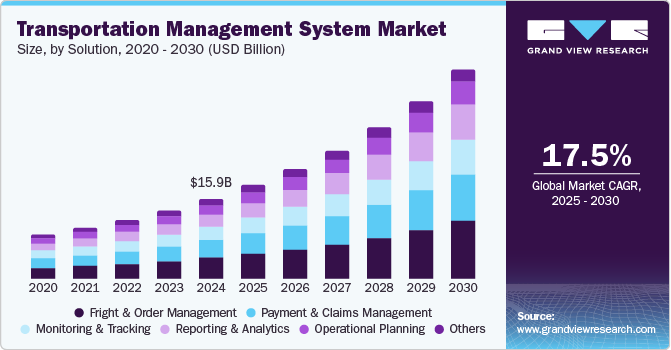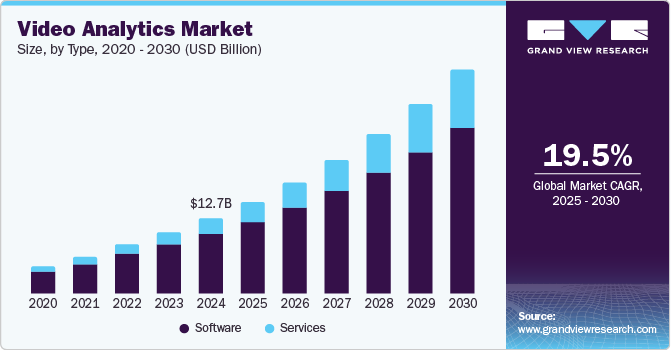Transportation Management System Market Size, Share & Trends Analysis growing at a CAGR of 17.5% from 2025 to 2030

The global transportation management system market size was estimated at USD 15.88 billion in 2024 and is estimated to reach USD 41.57 billion by 2030, growing at a CAGR of 17.5% from 2025 to 2030. The factors driving the global transportation management system (TMS) industry include the growth of retail and e-commerce industries, consistent advancement in technology leading to the introduction of innovative solutions in the market, and the strengthening of bilateral trade relations among various countries across the world.
Key Market Trends & Insights
- The North America transportation management system market was identified as a lucrative region in 2024.
- The U.S. transportation management system industry held a dominant position regionally in 2024.
- By solution, the freight & order management segment held the largest revenue share of 25.7% in 2024.
- By deployment, the on-premise segment held the largest revenue share in 2024.
- By end-use, the manufacturing segment dominated the market in 2024 in terms of revenue share.
Market Size & Forecast
- 2024 Market Size: USD 15.88 Billion
- 2030 Projected Market Size: USD 41.57 Billion
- CAGR (2025-2030): 17.5%
- North America: Largest market in 2024
Request a free sample copy or view report summary: https://www.grandviewresearch.com/industry-analysis/transportation-management-systems-market/request/rs1
Furthermore, TMS solutions help automate the manual tasks of supply chain operations, including planning and execution, route optimization, and shipment tracking. Thus, it helps reduce manual errors and saves time and costs involved in managing transportation operations, which are the key factors driving the transportation management system industry growth.
Transportation management systems play a primary role in supply chains, significantly affecting various aspects of the process, from operational planning, procurement, logistics, and lifecycle management. TMS offers deep visibility that helps in efficient transportation planning and monitoring, driving enhanced customer experience. Furthermore, the dynamically expanding global trade environment and transits are making it highly crucial for businesses to have a TMS system that can allow them to successfully navigate complex transit operations and processes around trade policies and compliance. Thus, the following factors are aimed at driving the transportation management system industry growth.
In recent years, transportation and logistics industries in emerging countries have come under significant pressure from growing consumer demands, rising competition from start-ups and rival logistics operators, and changing customer expectations. Most logistics companies in countries in the APAC region utilize advanced IoT technologies to localize inventory and manage orders instead of supply chains, fleets, and assets. For instance, Here Technologies, a location platform solution provider based in the Netherlands, conducted an “APAC on the Move 2023 Survey” to offer insights on the current trends in the supply chain, logistics, and fleet management. The survey offered insights on robotics, drones, machine learning, and artificial intelligence, which are the most likely investments among logistics companies in APAC. The survey found that 45% of APAC logistics companies are utilizing shipment monitoring and asset tracking solutions with manual inputs to shipments, tracking assets, and cargo. Thus, these are the primary factors expected to drive market growth.






